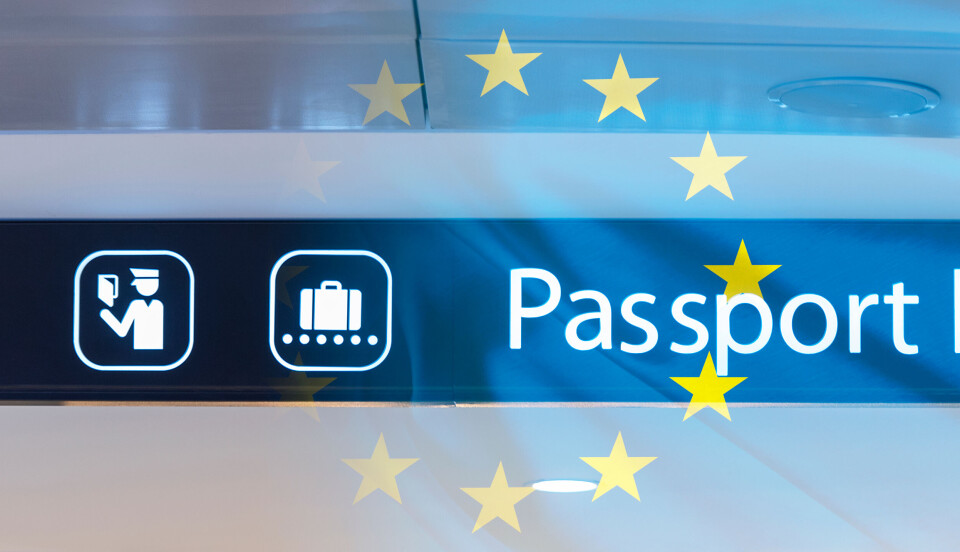-
Farmer protests in France: more blockades as ‘emergency law’ announced
Local union branches are protesting nationwide but unions are divided on next steps
-
Ryanair reopens Tours-London route for summer 2026
All four of the Irish airline’s summer services have returned to the airport
-
Marine Le Pen appeals public office ban: how could this impact France's 2027 presidential election?
Month-long appeal begins today but no result is expected until summer 2026
What is the EU’s Etias visa waiver scheme?
Britons, Americans, Canadians and Australians will be among the nationalities that will have to apply for the €7 Etias

Travellers entering the Schengen free movement area using the EU's new visa waiver scheme – expected to rollout in 2025 – will not need to hand over any biometric or health data during the application process.
However, they will need to do so to comply with requirements for the Entry/Exit System (EES) digital border system, which is set to be rolled out in 2024.
The confirmation came from the European Union, which stated that there has been "growing misinformation" about the type of data required for Etias, which will involve an online application process for permission to enter the Schengen area.
Neither information on a person’s health status, nor biometric information such as a fingerprint scan, will be needed when a person applies online for an Etias (European Travel Information Authorisation Scheme), officials said.
Both systems have seen delays, and an update on the pathway to their release – originally expected to be given in July – is now expected in October 2023.
What is the Etias visa waiver scheme?
The Etias visa waiver scheme will affect nationals of countries that currently already have visa-free access to the EU, such as the UK, the US, Australia, Canada, and Japan.
Etias will require them to apply in advance for authorisation to enter the bloc unless they have have a visa or residency card for an EU country, or are EU citizens. It will not, therefore, affect people such as Britons or Americans who live in France and who are returning home.
The authorisation will cost €7 and apply for three years (or until the travel document you used to apply expires).
There will be price exemptions for those under 18 and over 70, but they will still need an Etias before being granted entry.
The EU states that the process to apply for Etias will be quick and easy, taking up to ten minutes in most cases.
It will be possible to apply through an EU website or app, which will be made available closer to the time the scheme rolls out.
It will also be possible to apply for Etias through a third party, but the EU is already warning people over a number of fake sites relating to the scheme.
Read more: Beware of unofficial Etias visa-waiver websites, warns EU agency
Basic information required for Etias
Applications for an Etias have to be made before crossing the border into the EU.
The EU states that most applications will be accepted and confirmation sent within a few days of applying, but in some cases, it may take up to 30 days for internal reviews to take place. Once obtained, the approval will be checked when the passport is scanned at the border.
The EU will encourage people to apply for the visa waiver as early as possible once the scheme rolls out, to ensure it is obtained before the planned travel date.
As part of this initial application, the form will ask travellers for their:
- Name
- Address
- Occupation
- Passport details
- Travel plans while in the Schengen Area
Questions will also be asked about past travel to conflict zones, and criminal convictions.
If a third party completes the application for you, Etias will also ask them for basic personal details such as name and address.
Read more: New expected timeline for EU’s EES and Etias border systems
EU’s digital border will still collect biometric information
The implementation of Etias is complementary to the EES – the EU’s new digital border system.
When the EES is in place (the new date for which is still yet to be confirmed), travellers entering the bloc at any entry point (airport, seaport, land border crossing) will need to register their crossing and biometric data such as fingerprint scans and a digital photograph of their face will be collected.
The scheme will eventually replace the requirements of passport stamping to cross the border, aiming to simplify border crossings from non-EU citizens, whilst at the same time increasing security.
The digitisation of the Schengen area borders is being headed by the EU-LISA agency.
Read more: New European Entry/Exit System: 9 key things to know in advance
Potential friction between schemes
Original plans are for the EES to be fully in place before Etias is required; both projects have however seen several delays.
France is reported to be keen for the EES not to come into force until after the 2024 Olympic Games in Paris, to avoid long border queues for people coming and going from the events.
A report by the Belgian delegation to the Council of the EU has suggested that EES and Etias could be "decoupled", with Etias coming in first, and that this would have 'little impact'. It suggested an implementation date of May 2024 – just before the Olympics – for Etias on its own, allowing the EES to be implemented once all the border crossings are ready.
However, a statement by the EU in October 2023 confirmed that EES is expected to rollout in the latter half of 2024, with Etias following six month after, in the first half of 2025.
Related articles:
Has a start date been set for the EU's new digital border system?
Major delays on France-UK border in 2024, warns new Brexit report
























